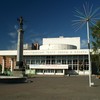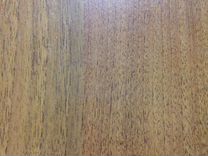|
|
|
|
 Far Far |
 WinNavigator WinNavigator |
 Frigate Frigate |
 Norton
Commander Norton
Commander |
 WinNC WinNC |
 Dos
Navigator Dos
Navigator |
 Servant
Salamander Servant
Salamander |
 Turbo
Browser Turbo
Browser |
|
|
 Winamp,
Skins, Plugins Winamp,
Skins, Plugins |
 Необходимые
Утилиты Необходимые
Утилиты |
 Текстовые
редакторы Текстовые
редакторы |
 Юмор Юмор |
|
|
|
File managers and best utilites |
Флаг Красноярска. Флаг красноярска
Флаг Красноярска — Википедия (с комментариями)
Материал из Википедии — свободной энциклопедии
Флаг Красноя́рска является символом города Красноярска Красноярского края Российской Федерации.
Описание
В 1995 году было принято первое Положение о флаге Красноярска.
Флаг города Красноярска представляет собой прямоугольное полотнище из четырёх равновеликих прямоугольных полей красного и синего цветов, разделённых горизонтальной и вертикальной полосами золотого цвета. Синие поля находятся справа вверху и слева внизу, красные поля соответственно — слева вверху и справа внизу. Отношения ширины флага к его длине 1,5:2,5 м, ширина разделительных полос золотого цвета 0,05 м.
В центре флага расположен герб соотношением 0,75:0,96 м.
Герб: на красном щите изображён золотой, стоящий на задних лапах лев, который несёт в передних лапах того же металла серп и лопату. Щит обрамлен полосой золотого цвета шириной 0,25 м.
В 2004 году было принято новое Положение о флаге, в котором (в числе прочего) изменилось описание герба, изображённого на флаге.
Флаг города представляет собой прямоугольное полотнище из четырёх равновеликих прямоугольных полей красного и синего цветов, разделённых горизонтальной и вертикальной полосами золотого цвета. Синие поля находятся справа вверху и слева внизу, красные поля соответственно слева вверху и справа внизу. Отношение ширины флага к его длине — 1,5:2,5 единицы, ширина разделительных полос золотого цвета — 0,05 единицы.
В центре флага расположен герб города соотношением 0,75:0,95 единицы, изображение которого не содержит пятибашенной короны.
Обоснование символики
Напишите отзыв о статье "Флаг Красноярска"
Примечания
- ↑ Решение Красноярского городского Совета от 19.09.2004 № 3-37
- ↑ Решение Красноярского городского Совета от 12.05.2004 об утверждении Положения «О флаге города Красноярска — административного центра Красноярского края»
Отрывок, характеризующий Флаг Красноярска
– Ну, теперь марш, ребята! – сказал Анатоль вставая. Лакей Joseph подал Анатолю сумку и саблю, и все вышли в переднюю. – А шуба где? – сказал Долохов. – Эй, Игнатка! Поди к Матрене Матвеевне, спроси шубу, салоп соболий. Я слыхал, как увозят, – сказал Долохов, подмигнув. – Ведь она выскочит ни жива, ни мертва, в чем дома сидела; чуть замешкаешься, тут и слезы, и папаша, и мамаша, и сейчас озябла и назад, – а ты в шубу принимай сразу и неси в сани. Лакей принес женский лисий салоп. – Дурак, я тебе сказал соболий. Эй, Матрешка, соболий! – крикнул он так, что далеко по комнатам раздался его голос. Красивая, худая и бледная цыганка, с блестящими, черными глазами и с черными, курчавыми сизого отлива волосами, в красной шали, выбежала с собольим салопом на руке. – Что ж, мне не жаль, ты возьми, – сказала она, видимо робея перед своим господином и жалея салопа. Долохов, не отвечая ей, взял шубу, накинул ее на Матрешу и закутал ее. – Вот так, – сказал Долохов. – И потом вот так, – сказал он, и поднял ей около головы воротник, оставляя его только перед лицом немного открытым. – Потом вот так, видишь? – и он придвинул голову Анатоля к отверстию, оставленному воротником, из которого виднелась блестящая улыбка Матреши. – Ну прощай, Матреша, – сказал Анатоль, целуя ее. – Эх, кончена моя гульба здесь! Стешке кланяйся. Ну, прощай! Прощай, Матреша; ты мне пожелай счастья. – Ну, дай то вам Бог, князь, счастья большого, – сказала Матреша, с своим цыганским акцентом. У крыльца стояли две тройки, двое молодцов ямщиков держали их. Балага сел на переднюю тройку, и, высоко поднимая локти, неторопливо разобрал вожжи. Анатоль и Долохов сели к нему. Макарин, Хвостиков и лакей сели в другую тройку. – Готовы, что ль? – спросил Балага. – Пущай! – крикнул он, заматывая вокруг рук вожжи, и тройка понесла бить вниз по Никитскому бульвару. – Тпрру! Поди, эй!… Тпрру, – только слышался крик Балаги и молодца, сидевшего на козлах. На Арбатской площади тройка зацепила карету, что то затрещало, послышался крик, и тройка полетела по Арбату. Дав два конца по Подновинскому Балага стал сдерживать и, вернувшись назад, остановил лошадей у перекрестка Старой Конюшенной.Флаг Красноярска — Википедия (с комментариями)
Материал из Википедии — свободной энциклопедии
| Красноярск | |
| Красноярский крайРоссия | |
| 250px | |
| Ошибка Lua в Модуль:Wikidata на строке 170: attempt to index field 'wikibase' (a nil value). | |
| 19 сентября 2004 [1] | |
| Ошибка Lua в Модуль:Wikidata на строке 170: attempt to index field 'wikibase' (a nil value). | |
| Ошибка Lua в Модуль:Wikidata на строке 170: attempt to index field 'wikibase' (a nil value). | |
| Ошибка Lua в Модуль:Wikidata на строке 170: attempt to index field 'wikibase' (a nil value). | |
| Ошибка Lua в Модуль:Wikidata на строке 170: attempt to index field 'wikibase' (a nil value). | |
| 3:5 | |
| 113 | |
| Ошибка Lua в Модуль:Wikidata на строке 170: attempt to index field 'wikibase' (a nil value). | |
| Ошибка Lua в Модуль:Wikidata на строке 170: attempt to index field 'wikibase' (a nil value). | |
| Ошибка Lua в Модуль:Wikidata на строке 170: attempt to index field 'wikibase' (a nil value). | |
| Ошибка Lua в Модуль:Wikidata на строке 170: attempt to index field 'wikibase' (a nil value). | |
| Ошибка Lua в Модуль:Wikidata на строке 170: attempt to index field 'wikibase' (a nil value). | |
| Ошибка Lua в Модуль:Wikidata на строке 170: attempt to index field 'wikibase' (a nil value). | |
| Ошибка Lua в Модуль:Wikidata на строке 170: attempt to index field 'wikibase' (a nil value). | |
| Ошибка Lua в Модуль:Wikidata на строке 170: attempt to index field 'wikibase' (a nil value). | |
| Ошибка Lua в Модуль:Wikidata на строке 170: attempt to index field 'wikibase' (a nil value). | |
| Ошибка Lua в Модуль:Wikidata на строке 170: attempt to index field 'wikibase' (a nil value). | |
| Ошибка Lua в Модуль:Wikidata на строке 170: attempt to index field 'wikibase' (a nil value). | |
| Ошибка Lua в Модуль:Wikidata на строке 170: attempt to index field 'wikibase' (a nil value). | |
| Ошибка Lua в Модуль:Wikidata на строке 170: attempt to index field 'wikibase' (a nil value). | |
| Ошибка Lua в Модуль:Wikidata на строке 170: attempt to index field 'wikibase' (a nil value). | |
| 200px 12 мая 1995[2] — 19 сентября 2004 | |
| Ошибка Lua в Модуль:Wikidata на строке 170: attempt to index field 'wikibase' (a nil value). | |
| Ошибка Lua в Модуль:Wikidata на строке 170: attempt to index field 'wikibase' (a nil value). | |
| Ошибка Lua в Модуль:Wikidata на строке 170: attempt to index field 'wikibase' (a nil value). | |
| Ошибка Lua в Модуль:Wikidata на строке 170: attempt to index field 'wikibase' (a nil value). | |
| Ошибка Lua в Модуль:Wikidata на строке 170: attempt to index field 'wikibase' (a nil value). | |
Флаг Красноя́рска является символом города Красноярска Красноярского края Российской Федерации.
Описание
В 1995 году было принято первое Положение о флаге Красноярска.
Флаг города Красноярска представляет собой прямоугольное полотнище из четырёх равновеликих прямоугольных полей красного и синего цветов, разделённых горизонтальной и вертикальной полосами золотого цвета. Синие поля находятся справа вверху и слева внизу, красные поля соответственно — слева вверху и справа внизу. Отношения ширины флага к его длине 1,5:2,5 м, ширина разделительных полос золотого цвета 0,05 м.
В центре флага расположен герб соотношением 0,75:0,96 м.
Герб: на красном щите изображён золотой, стоящий на задних лапах лев, который несёт в передних лапах того же металла серп и лопату. Щит обрамлен полосой золотого цвета шириной 0,25 м.
В 2004 году было принято новое Положение о флаге, в котором (в числе прочего) изменилось описание герба, изображённого на флаге.
Флаг города представляет собой прямоугольное полотнище из четырёх равновеликих прямоугольных полей красного и синего цветов, разделённых горизонтальной и вертикальной полосами золотого цвета. Синие поля находятся справа вверху и слева внизу, красные поля соответственно слева вверху и справа внизу. Отношение ширины флага к его длине — 1,5:2,5 единицы, ширина разделительных полос золотого цвета — 0,05 единицы.
В центре флага расположен герб города соотношением 0,75:0,95 единицы, изображение которого не содержит пятибашенной короны.
Обоснование символики
Напишите отзыв о статье "Флаг Красноярска"
Примечания
- ↑ Решение Красноярского городского Совета от 19.09.2004 № 3-37
- ↑ Решение Красноярского городского Совета от 12.05.2004 об утверждении Положения «О флаге города Красноярска — административного центра Красноярского края»
Отрывок, характеризующий Флаг Красноярска
– Милая моя, да ты ведь дариня!.. Как же ты оказалась-то здесь? И ты ведь живая!!! Тебе всё ещё больно? – Я удивлённо кивнула. – Ну, что же ты, нельзя такое смотреть!.. Девушка Анна ласково взяла мою, всё ещё «кипящую» от испепеляющей боли, голову в свои прохладные ладони, и вскоре я почувствовала, как жуткая боль начала медленно отступать, а через минуту и вовсе исчезла. – Что это было?.. – ошалело спросила я. – Ты просто посмотрела на то, что со мною было. Но ты ещё не умеешь защититься, вот и почувствовала всё. Любопытна ты очень, в этом сила, но и беда твоя, милая... Как зовут-то тебя? – Светлана... – понемногу очухиваясь, сипло произнесла я. – А вот она – Стелла. Почему вы меня дариней называете? Меня уже второй раз так называют, и я очень хотела бы знать, что это означает. Если можно, конечно же. – А разве ты не знаешь?!. – удивлённо спросила девушка-ведьма. – Я отрицательно мотнула головой. – Дариня – это «дарящая свет и оберегающая мир». А временами, даже спасающая его... – Ну, мне бы пока хоть себя-то спасти!.. – искренне рассмеялась я. – Да и что же я могу дарить, если сама ещё не знаю совсем ничего. И делаю-то пока одни лишь ошибки... Ничего я ещё не умею!.. – и, подумав, огорчённо добавила. – И ведь не учит никто! Разве что, бабушка иногда, и ещё вот Стелла... А я бы так хотела учиться!.. – Учитель приходит тогда, когда ученик ГОТОВ учиться, милая – улыбнувшись, тихо сказал старец. – А ты ещё не разобралась даже в себе самой. Даже в том, что у тебя давно уже открыто. Чтобы не показывать, как сильно расстроили меня его слова, я постаралась тут же поменять тему, и задала девушке-ведьме, настырно крутившийся в мозгу, щекотливый вопрос. – Простите меня за нескромность, Анна, но как же вы смогли забыть такую страшную боль? И возможно ли вообще забыть такое?.. – А я и не забыла, милая. Я просто поняла и приняла её... Иначе невозможно было бы далее существовать – грустно покачав головой, ответила девушка. – Как же можно понять такое?! Да и что понимать в боли?.. – не сдавалась я. – Это что – должно было научить вас чему-то особенному?.. Простите, но я никогда не верила в такое «учение»! По-моему так лишь беспомощные «учителя» могут использовать боль!Флаг Красноярска - WikiVisually
1. Красноярск – Krasnoyarsk is a city and the administrative center of Krasnoyarsk Krai, Russia, located on the Yenisei River. It is the third largest city in Siberia after Novosibirsk and Omsk, Krasnoyarsk is an important junction of the Trans-Siberian Railway and one of Russias largest producers of aluminum. The city is notable for its landscapes, author Anton Chekhov judged Krasnoyarsk to be the most beautiful city in Siberia. The total area of the city, including suburbs and the river, is 348 square kilometers, the Yenisei River flows from west to east through the city. Due to the Krasnoyarsk hydroelectric dam 32 kilometers upstream, the Yenisei never freezes in winter and never exceeds +14 °C in summer through the city, near the city center, its elevation is 136 meters above sea level. There are several islands in the river, the largest of which are Tatyshev and Otdyha Isles, to the south and west, Krasnoyarsk is surrounded by forested mountains averaging 410 meters in height above river level. The most prominent of them are Nikolayevskaya Sopka, Karaulnaya Gora, and Chornaya Sopka, the major rivers in and near Krasnoyarsk are the Yenisei, Mana, Bazaikha, and Kacha Rivers, the latter flowing throughout the historical center of the city. Due to the nature of the terrain, a few lakes exist in the vicinity of Krasnoyarsk. The forests close to the city are mostly pine and birch, further afield, along with Kansk to the east, it represented the southern limit of Russian expansion in the Yenisei basin during the seventeenth century. In the letter to Tsar Michael I the Cossacks reported, the fort was named Krasny Yar after the Yarin name of the place it was built, Kyzyl Char, which was translated as Krasny Yar. An intensive growth of Krasnoyarsk began with the arrival of the Siberian Route in 1735 to 1741 which connected the towns of Achinsk and Kansk with Krasnoyarsk. In 1749, a meteorite with a mass of about 700 kilograms was found 230 km south of Krasnoyarsk and it was excavated by Peter Simon Pallas in 1772 and transported to Krasnoyarsk and subsequently to St. Petersburg. The Krasnoyarsk meteorite is important because it was the first pallasite ever studied, the name Krasnoyarsk was given in 1822 when the village of Krasny Yar was granted town status and became the administrative center of Yeniseysk Governorate. In the 19th century, Krasnoyarsk was the center of the Siberian Cossack movement, by the end of the 19th century, Krasnoyarsk had several manufacturing facilities and railroad workshops and an engine-house. Growth continued with the discovery of gold and the arrival of a railroad in 1895, in the Russian Empire, Krasnoyarsk was one of the places to which political exiles were banished. For example, eight Decembrists were deported from St. Petersburg to Krasnoyarsk after the failure of the revolt, in 1934, Krasnoyarsk Krai, was formed, with Krasnoyarsk as its administrative center. During Stalinist times, Krasnoyarsk was a center of the gulag system. The most important labor camp was the Kraslag or Krasnoyarsky ITL with the two located in Kansk and Reshyoty
2. Флаг Красноярского края – The flag of Krasnoyarsk Krai, in the Russian Federation, is a red field charged with the krais coat of arms in the center. Two fifths of the height, it displays a golden lion holding a sickle in its left hand. The lion is surrounded by a wreath of cedar and oak leaves as well as a light blue ribbon on the left, right. A golden pedestal encloses the lion at the top, the flag was adopted on March 16,2000
3. Флаг России – The flag of Russia is a tricolor flag consisting of three equal horizontal fields, white on the top, blue in the middle and red on the bottom. The flag was first used as an ensign for Russian merchant ships and it remained in use until the establishment of the Russian Socialist Federative Soviet Republic in 1917. During the Soviet Unions existence, it used the flag with the red field with the hammer and sickle. With the dissolution of the Soviet Union, the tricolor was re-introduced as the flag of the Russian Federation in 1991 in the 1,2 ratio. The Tsarist tricolor was fully restored in 1993 after the crisis as the current flag. Two accounts of the flags origin connect it to the used by the Dutch Republic. The earliest mention of the flag occurs during the reign of Alexis I, in 1668, and is related to the construction of the first Russian naval ship, the frigate Oryol. A different account traces the origins of the Russian flag to tsar Peter the Greats visits to Arkhangelsk in 1693 and 1694, Peter was keenly interested in shipbuilding in the European style, different from the barges ordinarily used in Russia at the time. In 1693, Peter had ordered a Dutch-built frigate from Amsterdam, in 1694 when it arrived, the Dutch red-white-and-blue banner flew from its stern. Peter decided to model Russias naval flag after this banner by changing the sequence of colors, the Russian tricolour flag was adopted as a merchant flag at rivers in 1705. Two other Slavic countries, Slovakia and Slovenia, have similar to the Russian one. On 7 May 1883, the Russian flag was authorized to be used on land, and it became an official National flag before the coronation of Tsar Nicholas II in 1896. From that time period, a 1,2 red flag featuring the abbreviated name RSFSR was used, during the Second World War the white-blue-red tricolor has been used by the collaborationist troops of Andrey Vlasov, who was allied with Nazi Germany against the Soviet Union. It was not until the dissolution of the Soviet Union in 1991 that the tricolor was brought back as the flag of the new Russian Federation. The modern era flag underwent a change in 1993 and has been official since 2000. A variant of the flag was authorized for use by Tsar Nicholas II before World War I. Or was never made the state flag. All of the Soviet Republics flags were created by introducing a small, for Russia, the change was an introduction of the left-hand blue band
4. Красноярский край – Krasnoyarsk Krai is a federal subject of Russia, with its administrative center in the city of Krasnoyarsk—the third-largest city in Siberia. Krasnoyarsk Krai is the largest krai in the Russian Federation, the second largest federal subject, and the third largest subnational governing body by area in the world. It borders the Sakha Republic, Irkutsk, the Tuva Republic, the Republic of Khakassia, and Kemerovo, Tomsk, and Tyumen Oblasts, and the Kara Sea and Laptev Sea of the Arctic Ocean in the north. The krai is located in the basin of the Arctic Ocean, the main rivers of the krai are the Yenisei, and its tributaries, the Kan, the Angara, the Podkamennaya Tunguska, and the Nizhnyaya Tunguska. There are also several lakes in the krai. The largest lakes include Beloye, Belyo, Glubokoye, Itat, Khantayskoye, Labas, Lama, Pyasina, Taymyr, the rivers and lakes are rich with fish. The climate is continental with large temperature variations during the year. For the central and southern regions where most of the population lives, long winters and short. The territory of Krasnoyarsk Krai experiences conditions of three belts, Arctic, Subarctic, and moderate. In the north there are less than 40 days with temperature above 10 °C, the average temperature in January is −36 °C in the north and −18 °C in the south. The average temperature in July is +10 °C in the north, the annual precipitation is 316 millimeters. Snow covers the regions of the krai from early November until late March. The peaks of the Sayan Mountains higher than 2, 400–2,600 m, permafrost is widespread, especially in the north. The highest point of the krai is Grandiozny Peak in the East Sayan Mountains at an elevation of 2,922 meters, according to archaeologists, the territory of Siberia was settled around 40,000 BCE. The grave-mounds and monuments of the Scythian culture in Krasnoyarsk Krai belong to the 7th century BCE and are ones of the oldest in Eurasia, a princes grave, the Kurgan Arshan, discovered in 2001, is also located in the krai. Russian settlement of the began in the 17th century. After the construction of the Trans-Siberian Railway the Russian colonization of the strongly increased. During both the Tsarist and the Bolsheviks regimes the territory of Krasnoyarsk Krai was used as a place of exile of political enemies, the first leaders of the Soviet state, Vladimir Lenin and Joseph Stalin were exiled to what is now the krai in 1897–1900 and 1903, respectively
5. Россия – Russia, also officially the Russian Federation, is a country in Eurasia. The European western part of the country is more populated and urbanised than the eastern. Russias capital Moscow is one of the largest cities in the world, other urban centers include Saint Petersburg, Novosibirsk, Yekaterinburg, Nizhny Novgorod. Extending across the entirety of Northern Asia and much of Eastern Europe, Russia spans eleven time zones and incorporates a range of environments. It shares maritime borders with Japan by the Sea of Okhotsk, the East Slavs emerged as a recognizable group in Europe between the 3rd and 8th centuries AD. Founded and ruled by a Varangian warrior elite and their descendants, in 988 it adopted Orthodox Christianity from the Byzantine Empire, beginning the synthesis of Byzantine and Slavic cultures that defined Russian culture for the next millennium. Rus ultimately disintegrated into a number of states, most of the Rus lands were overrun by the Mongol invasion. The Soviet Union played a role in the Allied victory in World War II. The Soviet era saw some of the most significant technological achievements of the 20th century, including the worlds first human-made satellite and the launching of the first humans in space. By the end of 1990, the Soviet Union had the second largest economy, largest standing military in the world. It is governed as a federal semi-presidential republic, the Russian economy ranks as the twelfth largest by nominal GDP and sixth largest by purchasing power parity in 2015. Russias extensive mineral and energy resources are the largest such reserves in the world, making it one of the producers of oil. The country is one of the five recognized nuclear weapons states and possesses the largest stockpile of weapons of mass destruction, Russia is a great power as well as a regional power and has been characterised as a potential superpower. The name Russia is derived from Rus, a state populated mostly by the East Slavs. However, this name became more prominent in the later history, and the country typically was called by its inhabitants Русская Земля. In order to distinguish this state from other states derived from it, it is denoted as Kievan Rus by modern historiography, an old Latin version of the name Rus was Ruthenia, mostly applied to the western and southern regions of Rus that were adjacent to Catholic Europe. The current name of the country, Россия, comes from the Byzantine Greek designation of the Kievan Rus, the standard way to refer to citizens of Russia is Russians in English and rossiyane in Russian. There are two Russian words which are translated into English as Russians
6. Герб Красноярска – The coat of arms of Krasnoyarsk is the heraldic symbol of Krasnoyarsk, Russia. The first version was approved on March 12,1804, the coat of arms was divided horizontally into two parts, the upper part containing the coat of arms of Tomsk Governorate, and the lower part picturing the Krasny Yar cliff on a silver background. The shield was topped with the crown of the Russian Empire. The current coat of arms was approved on November 28,2004 and it contains the same red shield as in 1851 but with a slightly changed figure of the lion in the officially approved image. The shield is topped with a form of the mural crown, in 2005, a 16-meter tall pillar with a bronze statue of the Krasnoyarsk heraldic lion upon its top was erected at the Krasnoyarsk Railway Station square
wikivisually.com
|
|
..:::Счетчики:::.. |
|
|
|
|
|
|
|
|









